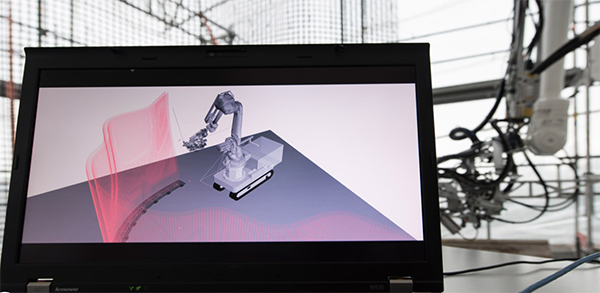
NEW COLUMN: Careers in "Smart" Robotics: Do Yourself a Favor
Career Idea #3: Go Build Something with a Robot…a Building, a House…Anything Is Possible
32 “Smart” Job Tracks Powered by Robotics & AI
fast as robots, drones and 3D printing are making construction more efficient, and more creative.”
Building with robots
A new wave of innovation is coming, which will change what buildings look like, how they are made, and who wins in the new era of the construction industry.
Architects have always been limited by what their builders can actually make. But if robots were doing the building, all sorts of new possibilities open up.
Straight walls partly exist for the convenience of builders and architects – but for a robot, a curved wall is almost as easy. So at the DFAB House, a small test building in the suburbs of Zurich, Switzerland, the main wall follows an elegant, irregular curve. It’s built around a steel frame, welded by robots, which humans would have found almost impossible to construct unaided.

Even stranger, the roof consists of a series of flowing, organic ridges, which look as if they were secreted by a giant insect. Awkward to dust, perhaps, but designed by computer and made with 3D printing to achieve the same strength as a conventional, straight roof, yet with half the weight.
The house, built by Switzerland’s National Center of Competence in Research in Digital Fabrication, demonstrates what a computer-designed, robot-built house could look like.
 “If you think about how buildings are built today all these processes have a long history – but they are all designed to be executed by people,” says Mr Graser [Konrad Graser, project manager at DFAB House]. “So they are taking advantage of all the talents people have, all the things people are good at. You can’t just transfer them to a digital tool or a machine.
“If you think about how buildings are built today all these processes have a long history – but they are all designed to be executed by people,” says Mr Graser [Konrad Graser, project manager at DFAB House]. “So they are taking advantage of all the talents people have, all the things people are good at. You can’t just transfer them to a digital tool or a machine.
“So what we are trying to do is take a step back and think about what the machine is good at and what the robot is good at, and really rethink the way that we build.”
The DFAB House showed how robots can play a role in construction, indoors and out. Robots build the wooden sections which form the upper floors of the house, and welded the steel frame of the curved concrete wall. Mr Graser calls this “3D printing with steel”.
From Russia to Dubai, France to the Netherlands, architects and builders are experimenting with the possibilities that new technologies such as 3D printing open up.
Robots are being built for all sorts of construction tasks, which are often heavy, repetitive and dull – perfect candidates for automation. There are robots which can install drywall, lay bricks, or lift heavy objects, though they are a long way from replacing humans altogether.
For instance, SAM, the “semi-automated mason” developed by a US company called Construction Robotics, has been used on a number of construction projects in the US. It can lay an accurate course of bricks with mortar, but still needs a human tender to measure the site, set up the robot and tidy up the external surface of the mortar afterwards.
And while these may open up exciting new design possibilities, their biggest impact will be on the economics of building projects.
When the earth is first moved at the start of a construction project, it will often now be under digital guidance. The Japanese company Komatsu now sells diggers equipped with GPS technology which know, to within a centimetre or two, exactly where the bucket edge is scraping the ground.
Special note for Drone pros: There’s a lot of buzz around drones for builders. The investment bank Goldman Sachs reckons that construction will be easily the biggest professional market for drones, exceeded only by the military.
Article courtesy of the BBC
